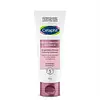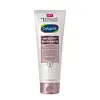Cetaphil Healthy Radiance Brightness Reveal Creamy Cleanser Versus Cetaphil Healthy Radiance Gentle PHA Exfoliating Cleanser
What's inside
What's inside
 Key Ingredients
Key Ingredients

 Benefits
Benefits

 Concerns
Concerns

 Ingredients Side-by-side
Ingredients Side-by-side

Glycerin
HumectantWater
Skin ConditioningStearic Acid
CleansingMyristic Acid
CleansingPotassium Hydroxide
BufferingLauric Acid
CleansingPalmitic Acid
EmollientCocamidopropyl Betaine
CleansingHydrogenated Polyisobutene
EmollientGlyceryl Stearate
EmollientAnhydroxylitol
HumectantArachidic Acid
CleansingButylene Glycol
HumectantCapric Acid
CleansingCaprylyl Glycol
EmollientEthylhexylglycerin
Skin ConditioningHydrogenated Polydecene
EmollientNiacinamide
SmoothingOleic Acid
EmollientPancratium Maritimum Extract
BleachingPolyquaternium-7
Potassium Benzoate
PreservativeSodium Benzoate
MaskingSodium Chloride
MaskingSorbitol
HumectantTrisodium Ethylenediamine Disuccinate
Xylitol
HumectantXylitylglucoside
HumectantGlycerin, Water, Stearic Acid, Myristic Acid, Potassium Hydroxide, Lauric Acid, Palmitic Acid, Cocamidopropyl Betaine, Hydrogenated Polyisobutene, Glyceryl Stearate, Anhydroxylitol, Arachidic Acid, Butylene Glycol, Capric Acid, Caprylyl Glycol, Ethylhexylglycerin, Hydrogenated Polydecene, Niacinamide, Oleic Acid, Pancratium Maritimum Extract, Polyquaternium-7, Potassium Benzoate, Sodium Benzoate, Sodium Chloride, Sorbitol, Trisodium Ethylenediamine Disuccinate, Xylitol, Xylitylglucoside
Water
Skin ConditioningGlycerin
HumectantCocamidopropyl Betaine
CleansingGluconolactone
Skin ConditioningNiacinamide
SmoothingSodium Methyl Cocoyl Taurate
CleansingPEG-120 Methyl Glucose Trioleate
CleansingSodium Lauroyl Methyl Isethionate
CleansingSodium Chloride
MaskingDi-PPG-2 Myreth-10 Adipate
EmollientSodium Benzoate
MaskingPEG-150 Distearate
EmulsifyingSodium Methyl Oleoyl Taurate
CleansingSodium Cocoyl Isethionate
CleansingPropanediol
SolventCoconut Acid
CleansingAlcohol
AntimicrobialSodium Hydroxide
BufferingAchillea Millefolium Flower/Leaf/Stem Extract
Skin ConditioningTrisodium Ethylenediamine Disuccinate
Malva Sylvestris Flower/Leaf/Stem Extract
Skin ConditioningMelissa Officinalis Leaf Extract
Skin ConditioningMentha Piperita Leaf Extract
Skin ConditioningPrimula Veris Flower Extract
Skin ConditioningAlchemilla Vulgaris Flower/Leaf/Stem Extract
AstringentVeronica Officinalis Flower/Leaf/Stem Extract
AstringentBHA
AntioxidantWater, Glycerin, Cocamidopropyl Betaine, Gluconolactone, Niacinamide, Sodium Methyl Cocoyl Taurate, PEG-120 Methyl Glucose Trioleate, Sodium Lauroyl Methyl Isethionate, Sodium Chloride, Di-PPG-2 Myreth-10 Adipate, Sodium Benzoate, PEG-150 Distearate, Sodium Methyl Oleoyl Taurate, Sodium Cocoyl Isethionate, Propanediol, Coconut Acid, Alcohol, Sodium Hydroxide, Achillea Millefolium Flower/Leaf/Stem Extract, Trisodium Ethylenediamine Disuccinate, Malva Sylvestris Flower/Leaf/Stem Extract, Melissa Officinalis Leaf Extract, Mentha Piperita Leaf Extract, Primula Veris Flower Extract, Alchemilla Vulgaris Flower/Leaf/Stem Extract, Veronica Officinalis Flower/Leaf/Stem Extract, BHA
 Reviews
Reviews

Ingredients Explained
These ingredients are found in both products.
Ingredients higher up in an ingredient list are typically present in a larger amount.
Cocamidopropyl Betaine is a fatty acid created by mixing similar compounds in coconut oil and dimethylaminopropylamine, a compound with two amino groups.
This ingredient is a surfactant and cleanser. It helps gather the dirt, pollutants, and other impurities in your skin to be washed away. It also helps thicken a product and make the texture more creamy.
Being created from coconut oil means Cocamidopropyl Betaine is hydrating for the skin.
While Cocamidopropyl Betaine was believed to be an allergen, a study from 2012 disproved this. It found two compounds in unpure Cocamidopropyl Betaine to be the irritants: aminoamide and 3-dimethylaminopropylamine. High-grade and pure Cocamidopropyl Betaine did not induce allergic reactions during this study.
Learn more about Cocamidopropyl BetaineGlycerin is already naturally found in your skin. It helps moisturize and protect your skin.
A study from 2016 found glycerin to be more effective as a humectant than AHAs and hyaluronic acid.
As a humectant, it helps the skin stay hydrated by pulling moisture to your skin. The low molecular weight of glycerin allows it to pull moisture into the deeper layers of your skin.
Hydrated skin improves your skin barrier; Your skin barrier helps protect against irritants and bacteria.
Glycerin has also been found to have antimicrobial and antiviral properties. Due to these properties, glycerin is often used in wound and burn treatments.
In cosmetics, glycerin is usually derived from plants such as soybean or palm. However, it can also be sourced from animals, such as tallow or animal fat.
This ingredient is organic, colorless, odorless, and non-toxic.
Glycerin is the name for this ingredient in American English. British English uses Glycerol/Glycerine.
Learn more about GlycerinNiacinamide is a multitasking form of vitamin B3 that strengthens the skin barrier, reduces pores and dark spots, regulates oil, and improves signs of aging.
And the best part? It's gentle and well-tolerated by most skin types, including sensitive and reactive skin.
You might have heard of "niacin flush", or the reddening of skin that causes itchiness. Niacinamide has not been found to cause this.
In very rare cases, some individuals may not be able to tolerate niacinamide at all or experience an allergic reaction to it.
If you are experiencing flaking, irritation, and dryness with this ingredient, be sure to double check all your products as this ingredient can be found in all categories of skincare.
When incorporating niacinamide into your routine, look out for concentration amounts. Typically, 5% niacinamide provides benefits such as fading dark spots. However, if you have sensitive skin, it is better to begin with a smaller concentration.
When you apply niacinamide to your skin, your body converts it into nicotinamide adenine dinucleotide (NAD). NAD is an essential coenzyme that is already found in your cells as "fuel" and powers countless biological processes.
In your skin, NAD helps repair cell damage, produce new healthy cells, support collagen production, strengthen the skin barrier, and fight environmental stressors (like UV and pollution).
Our natural NAD levels start to decline with age, leading to slower skin repair, visible aging, and a weaker skin barrier. By providing your skin niacinamide, you're recharging your skin's NAD levels. This leads to stronger, healthier, and younger looking skin.
Another name for vitamin B3 is nicotinamide. This vitamin is water-soluble and our bodies don't store it. We obtain Vitamin B3 from either food or skincare. Meat, fish, wheat, yeast, and leafy greens contain vitamin B3.
The type of niacinamide used in skincare is synthetically created.
Learn more about NiacinamideSodium Benzoate is a preservative. It's used in both cosmetic and food products to inhibit the growth of mold and bacteria. It is typically produced synthetically.
Both the US FDA and EU Health Committee have approved the use of sodium benzoate. In the US, levels of 0.1% (of the total product) are allowed.
Sodium benzoate works as a preservative by inhibiting the growth of bacteria inside of cells. It prevents the cell from fermenting a type of sugar using an enzyme called phosphofructokinase.
It is the salt of benzoic acid. Foods containing sodium benzoate include soda, salad dressings, condiments, fruit juices, wines, and snack foods.
Studies for using ascorbic acid and sodium benzoate in cosmetics are lacking, especially in skincare routines with multiple steps.
We always recommend speaking with a professional, such as a dermatologist, if you have any concerns.
Learn more about Sodium BenzoateChances are, you eat sodium chloride every day. Sodium Chloride is also known as table salt.
This ingredient has many purposes in skincare: thickener, emulsifier, and exfoliator.
You'll most likely find this ingredient in cleansers where it is used to create a gel-like texture. As an emulsifier, it also prevents ingredients from separating.
There is much debate on whether this ingredient is comedogenic. The short answer - comedogenic ratings don't tell the whole story. Learn more about comegodenic ratings here.
The concensus about this ingredient causing acne seems to be divided. Research is needed to understand if this ingredient does cause acne.
Scrubs may use salt as the primary exfoliating ingredient.
Learn more about Sodium ChlorideTrisodium Ethylenediamine Disuccinate is used to help stabilize a product.
It is a chelating agent, meaning it helps prevent metal ions from binding to other ingredients. This prevents unwanted reactions in products. Metal ions can come into a product via the water ingredient. They are found in trace amounts and are not known to be harmful.
Water. It's the most common cosmetic ingredient of all. You'll usually see it at the top of ingredient lists, meaning that it makes up the largest part of the product.
So why is it so popular? Water most often acts as a solvent - this means that it helps dissolve other ingredients into the formulation.
You'll also recognize water as that liquid we all need to stay alive. If you see this, drink a glass of water. Stay hydrated!
Learn more about Water